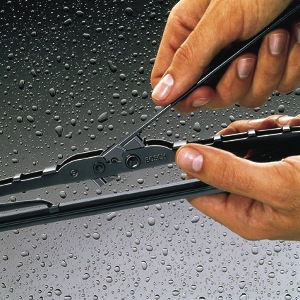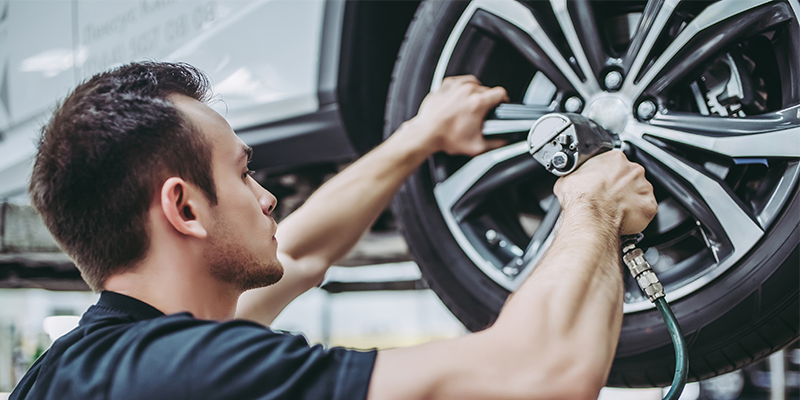 Wiper blades are first and foremost a safety item. They improve visibility through a windshield obscured by rain, snow or even mud, giving the driver more time to see and react to traffic or road hazards.
Wiper blades are first and foremost a safety item. They improve visibility through a windshield obscured by rain, snow or even mud, giving the driver more time to see and react to traffic or road hazards.
They come in a bewildering array of part numbers, brands-within-brands, and with many alternative ways of describing the components. The thin rubber blades (also referred to as inserts, refills or squeegees) come in various lengths, packaged alone or with metal, polymer or carbon fiber composite frames (also called brackets or superstructure) with various attachment methods (hook, 9×4 hook, side lock or bayonet). And, at least one manufacturer offers multi-colored frames as style accessories.
Wipers have many enemies. Oily road film, bug splatter, tree sap, bird droppings, car wax, road grit and salts, freezing temperatures, UV rays and ozone, extreme heat or improper installation can cause smearing, scratching or blade damage.
Manufacturer recommendations include inspecting blades for damage every six months or 6,000 miles. The makers advise replacing the blades in pairs to ensure uniform visibility across the windshield. While performing an inspection, remember that wiper blades are part of a system that includes the vehicle’s wiper arms, wiper motors, washer fluid, fluid reservoir, fluid pump and hoses. A problem with any one element can contribute to poor wiper blade performance.
The ASE sets standards for wiper blade durability and performance (SAE J903C), and manufacturers continue to employ new technology in a product that outwardly has not changed much in nearly a century. Graphite has been added to natural rubber blades to offer quiet and smooth wiping with less streaking. Silicone rubber blades provide UV protection and longer life; Teflon-coated blades offer durability and no-stick qualities. Blade refinements include dual rubber compounds – hard for keeping an edge and soft to flip over easily at the end the wiper arm arc. Winter blades with thicker squeegees and metal parts enclosed in a rubber boot to prevent ice and snow buildup remain popular in some regions.
A growing number of manufacturers offer aerodynamic blades with built-in spoilers that reduce wind lift at high speeds, decrease chatter and apply uniform pressure to keep the blade in contact with the glass even at the curved extremities of the windshield. Plus, the OE-match blades preserve the performance styling found on many vehicles.
Becoming more common OE on European and some American cars, bracketless (or beam) blades are being heralded as the future of the super-premium wiper category.
Where conventional wiper blades have only six or eight pressure points, beam blades offer continuous pressure across the wiper’s length, and their sleek styling is designed to complement modern vehicle aesthetics. Beam blades are often positioned as an aftermarket upgrade for vehicles equipped with conventional blades.
Making wiper system inspections routine helps to promote safety and can enhance a dealer’s reputation for attention to detail. When it comes to wiper blades, who better to provide advice about putting “new rubber” on a vehicle than a tire dealer?













